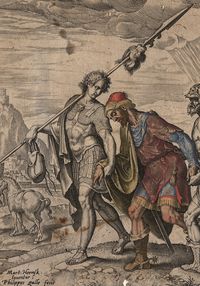Vagabond images: history and techniques of European prints (15th-18th century) - Claudio Galleri (course in French)
 The aim of this course is to increase awareness of the multiform world of the printed image and to provide the necessary keys to decipher it. Since its medieval, pre-Gutenberg origins and up to the 18th century, a period rich in technical productions and innovations, the printing process, both intaglio and relief, was able to meet the challenge of reproducing all kinds of pictures on a large scale and thus developed as a powerful vehicle for transmitting artistic forms and models. We will therefore retrace the major points which characterize the growth of the printed image during this period: the reproduction or the interpretation of works of art and its conventions (Raphael’s and Rubens’ workshops, the ancestors of art catalogues), the independent creation and experimentation of processes (Callot, Rembrandt, Piranesi…), including the circulation of information and knowledge. This part will be ideally completed by several hands-on sessions at the Lyon City Library during which we will examine a selection of prints from the Library’s special collections and conduct identification and description exercises.
The aim of this course is to increase awareness of the multiform world of the printed image and to provide the necessary keys to decipher it. Since its medieval, pre-Gutenberg origins and up to the 18th century, a period rich in technical productions and innovations, the printing process, both intaglio and relief, was able to meet the challenge of reproducing all kinds of pictures on a large scale and thus developed as a powerful vehicle for transmitting artistic forms and models. We will therefore retrace the major points which characterize the growth of the printed image during this period: the reproduction or the interpretation of works of art and its conventions (Raphael’s and Rubens’ workshops, the ancestors of art catalogues), the independent creation and experimentation of processes (Callot, Rembrandt, Piranesi…), including the circulation of information and knowledge. This part will be ideally completed by several hands-on sessions at the Lyon City Library during which we will examine a selection of prints from the Library’s special collections and conduct identification and description exercises.
In addition to the historical and technical development of prints, the course will also analyze prints as objects, and their uses and functions in different contexts. Thematic approaches dealing with colour-adding, the print market, the taste of collectors, devotional uses, monumental prints, contamination of models (painting, ceramics, the decorative arts), the scientific image, the illustrated book will also be discussed.
We will also consider research tools, from bibliography to data bases including the major digital libraries for prints. During the two sessions at the Museum for Printing and Graphic Communication in Lyon, there will be a demonstration of relief and intaglio techniques by a professional artist-engraver, Eléonore Litim, and a visit of the Museum’s collections, focused on the printed image.

